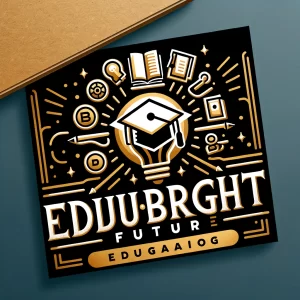Introduction
Art education is a vital component of early childhood development, offering more than just a chance for children to express themselves. It nurtures creativity, improves motor skills, and offers emotional and cognitive benefits. By integrating art into early childhood education, we provide children with tools for innovation and expression that last a lifetime.
The Importance of Art in Early Development
Art encourages young children to explore their imagination and creativity, allowing them to express ideas and feelings in ways that words may not always allow. This form of expression is crucial for emotional development and helps children understand their world. Through art, children learn to communicate visually, an essential skill in a world where images and visuals are increasingly dominant.
Emotional and Psychological Growth
Engaging in art activities helps children develop self-awareness and self-expression. It provides a safe space for them to explore and articulate their feelings. By expressing themselves through art, children can process emotions and experiences that they might find difficult to verbalize, promoting emotional maturity and psychological resilience.
Social Development
Art projects often involve collaboration, which can improve social skills. Working on group projects teaches children to cooperate, share, and resolve conflicts, fostering a sense of community and teamwork. It also helps children understand and appreciate diverse perspectives, as they see how their peers interpret and create art differently.
Benefits of Art Education
Enhanced Fine Motor Skills
Art activities such as cutting, drawing, and sculpting require precision and coordination, which improve fine motor skills. These activities help develop hand-eye coordination and dexterity, essential for other tasks such as writing and using tools. For instance, manipulating small objects, using scissors, and controlling a paintbrush can significantly enhance a child’s ability to perform fine motor tasks.
Cognitive Development
Art promotes critical thinking and problem-solving skills as children decide how to create their art pieces. It encourages them to make choices, plan their work, and evaluate the results. These processes develop their ability to think creatively and strategically. Additionally, art can enhance memory and concentration, as creating a piece often involves recalling shapes, colors, and patterns.
Emotional Expression
Art allows children to convey emotions in a safe and constructive manner, aiding in emotional maturity and understanding. Creating art can be therapeutic, providing a way for children to release and manage their emotions. It also helps children develop empathy by enabling them to understand and express complex feelings.
Language and Communication Skills
Discussing their artwork helps children develop their language skills. They learn to describe what they have created, explain their choices, and tell stories about their art. This verbal articulation enhances their vocabulary and improves their ability to communicate effectively.
Implementing Art Education
Variety of Materials
Providing access to diverse art materials such as paints, crayons, clay, and fabrics stimulates creativity and innovation. Different materials offer various textures, colors, and possibilities, encouraging children to experiment and explore. For example, using clay can help children understand three-dimensional space and structure, while painting can teach color theory and blending techniques.
Encourage Self-Expression
Allowing children to lead their artistic explorations, with guidance but not dictation, fosters independence and confidence. Encouraging children to make their own choices in their art projects empowers them and validates their creativity. Teachers and caregivers should provide constructive feedback that encourages experimentation rather than focusing on “correct” outcomes.
Incorporate Art Across the Curriculum
Using art to teach concepts from other subjects, such as math (shapes and counting) or science (color mixing and biology), makes learning more engaging and accessible. Integrating art with academic subjects can deepen understanding and retention. For example, drawing shapes can reinforce geometric concepts, and painting scenes from a story can enhance comprehension and memory.
Challenges in Art Education
Undervaluation of Art
One significant challenge is the undervaluation of art compared to subjects like math and science. Overcoming this requires educating parents and administrators about the critical role art plays in holistic child development. Advocating for the benefits of art education and providing evidence of its impact on cognitive and emotional development can help shift perceptions.
Funding and Resources
Limited funding and resources can restrict access to quality art education. Schools and communities must prioritize allocating funds and resources to ensure all children have the opportunity to benefit from art education. Partnerships with local art organizations and businesses can also provide additional support and materials.
Professional Development
Teachers need adequate training to effectively incorporate art into their curriculum. Providing professional development opportunities can help educators learn new techniques and strategies for integrating art into their teaching. This ensures that art education is delivered effectively and enriches the overall learning experience.
Conclusion
Art education is not merely a supplementary activity; it is a critical part of early childhood education that fosters creativity, enhances learning, and supports emotional well-being. By nurturing young children’s artistic talents, we equip them with creative problem-solving skills that are essential for success in any future endeavor. Investing in art education from an early age ensures that children develop into well-rounded, emotionally mature, and cognitively skilled individuals.
